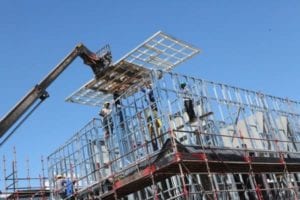
Leaders in the green building industry have highlighted its potential to address both climate change and unemployment
“The built environment offers one of the biggest climate change mitigation opportunities and it’s backed by a solid business case. Designing, building and operating green buildings requires that we grow a workforce that have the necessary skills and experience to ensure that the projects deliver on their promise of ‘treading lightly’ on our very stressed and fragile environment,” says Green Building Council (GBCSA) CEO, Brian Wilkinson.
Recent reports from job listing giant Indeed show that new jobs in green technologies are beating out competition across the globe.
“The business world is adjusting to meet the criteria of the Paris Agreement, creating a big demand for sustainable know-how at every skill level,” says John Schooling, Director of construction, development and renewable energy group STAG African.
Industry poised to take off
A property industry slump in 2008 and the looming student accommodation crisis lit the fire that saw STAG African pioneer the use of Innovative Building Technologies (IBTs) for the construction of student residences. IBTs reduce construction time by up to 40% and costs by 13% through relying on 87% recycled lightweight steel frames and requiring zero water in the construction process.
In recognition of this, the South African government now requires that IBTs be used for 60% of all new social infrastructure.
“It is a space ripe for new research, employment and vocational enrichment – and the private sector is starting to recognise the value in anticipating future demands for vocational knowledge and up-skilling employees to meet them,” says Schooling.
“If industry and urban development is going green – and we know it is – then it is key that we equip the youth with knowledge, experience and interest in IBTs and sustainable building,” adds Wilkinson.
The scene appears ripe for this industry to take off in South Africa and elsewhere on the continent, and it shows great potential to address unemployment rates and facilitating greater financial security for future generations.

